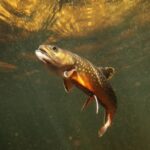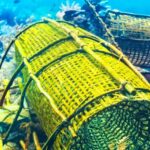Crappie fishing is a great way to spend time outdoors and relax. They’re freshwater fish and are native to North America.
Crappie prefer clear water and shallow areas near rocky bottoms, and they’re usually found in large schools during the day, but at night they tend to hide under logs or another cover.
If you want to catch crappie, you’ll need to know the best times to catch them, as well as the best ways to catch them.
Find out everything you might need to know about catching crappie in the following article.
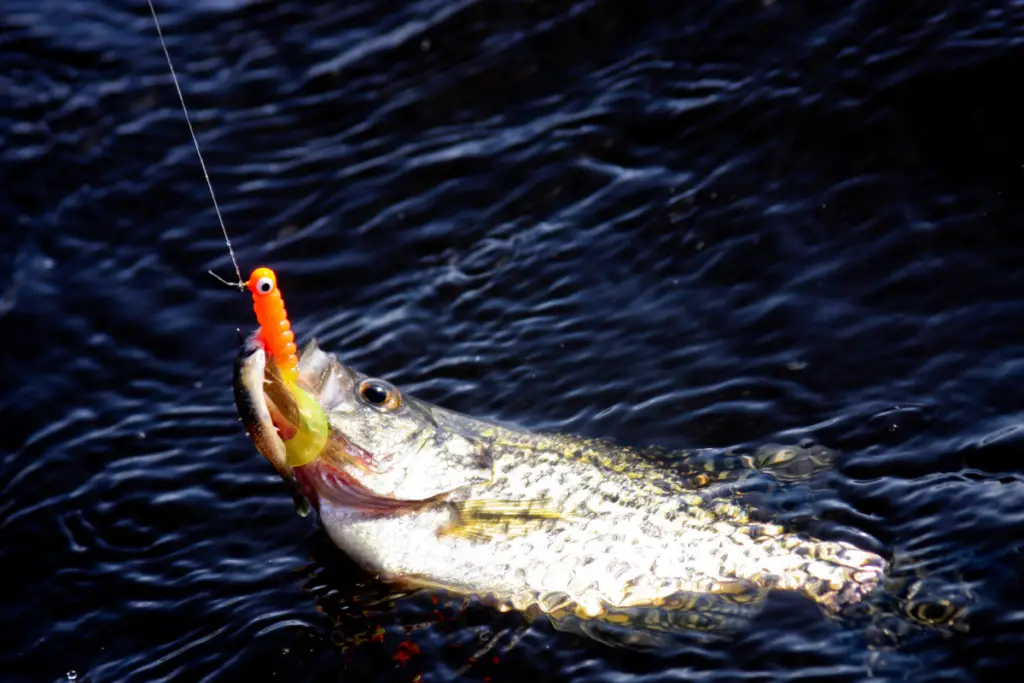
Fishing For Crappie: An Overview
Crappie can be found all over the United States; regardless of the season, you’re likely to find them in many streams and lakes. They may be small, but they more than makeup for it with their vast numbers, as well as just how easy it is to catch them.
It’s no wonder they’re such a popular fish. You won’t be needing any special equipment or advanced skills to catch a good amount of crappie.
They can also make for a great meal, too- their meat goes well with a wide array of recipes.
Unlike bigger fish that are notoriously tricky to catch, a crappie is an ideal option if you’re a beginner angler, or you’re teaching your children how to fish. Regardless of your skill level, you’re very likely to catch several crappies with a little patience.
Even if you are an expert angler, sometimes you might just want a bit of respite from the long, tenuous battles with bigger fish- some of which won’t even result in a successful catch.
There is black crappie and there is white crappie, but there’s no real difference- nor is there any difference in the technique you should use to catch them.
The only reason you’d need to discern between the two colors is if you’ve caught particularly large crappie, one so large it might make the record books.
So, if you do catch large crappie and you need to be able to tell them apart, what are the things you should be looking for?
Usually, it’s less in the color difference and more in the number of dorsal fin spines. While the white crappie tends to only have six, the black type of crappie is more likely to have seven, or even eight.
There are some differences in the colors as well, although they’re less noticeable than the differences in the dorsal fins.
White crappie is pale, and will usually have dark spots on their sides, in a pattern of vertical stripes. The black crappie’s colorings have no such pattern; their spotting is far more irregular.
Crappie: About The Fish
The crappie species (also known as the Pomoxis Annularis and Pomoxis Nigromaculatus) is native to North America, but there is more than one type. The Pomoxis Annularis is known as the white crappie, while the Pomoxis Nigromaculatus is known as the black crappie.
Their colors can vary, though, depending on their environment, their age, and the genetics of their local population. Regardless of their color, the technique for catching them is the same.
Both types are found in freshwater, and they’re very popular amongst freshwater anglers. Their environment tends to consist largely of water with moderate acid content and large amounts of vegetation.
In the initial stages of their youth, the fish feed on prey that is mostly microscopic, including Cladocera, Daphnia, and Cyclops. Once a crappie has matured, though, it more often feeds on minnows, a variety of aquatic insects, and the fish fingerlings of other fish.
They’re schooling fish, not only amongst their species but also amongst different kinds of panfish. Their preferred underwater environment includes submerged structures, such as weed beds and fallen trees.
In the daytime crappie remain deep under the water, only ascending to the shore to feed, which would occur most frequently at dusk or dawn. When they’re spawning, though, large numbers of them are often spotted in more shallow waters.
One of the reasons they’re so popular amongst ice fishers is because, during the winter months, they don’t go into any form of hibernation.
Although both types of crappie are very similar, you’re more likely to find black crappie in cool and clear lakes, or rivers that are moving slowly. White crappie, on the other hand, don’t mind living in still, warm water. Usually, any given body of water will have more of one type of crappie than the other.
They have several other names, often referred to as papermouths, specks, bachelor perch, tinmouth, and many others.
How To Fish For Crappie
Fishing for crappie is a famously easy process, but if you’re trying to catch as many crappies as you can, there are some more complex techniques you can try to master.
The following are some of the most common methods for catching crappie (aside from just using a cane pole and line, of course).
Spider Rigs
Spider rigging simply means you’re using several rods at the same time, all pointed at different angles. This method is most common when the crappie is in its spawning phase and can be found in shallow waters.
It’s also used quite commonly amongst ice fishers because the species doesn’t hibernate, so they remain active even when the water is cold.
Bobber & Minnow Rig
By far one of the simplest methods (and also one of the most effective), this rig should help you catch crappie throughout the year.
The technique simply requires a fixed bobber, floating roughly one to two feet above your minnow bait. The bait itself should be attached to either a number 1 or number 2 Aberdeen hook.
Whether you use a weight for your bait or not (the latter option would allow the bait to swim freely), this is one of the most effective methods when it comes to fishing for crappie in shallow water.
When you’re in deeper waters or brush piles, though, you’ll want to be using a slip bobber. Set the bobber fairly deep in the water, and use either some split shots or some light pinch-on sinkers to get your live bait (minnow is recommended) where you want it to be.
Whether you’re in shallow water or deep water, a long rod (between seven to 12 feet) will be best suited to this rig.
Jig Fishing
Another popular method for catching crappie is using jigs, either by casting them or by presenting them vertically. If you’re fishing amongst piles of brush, you should be casting past your target.
If this method isn’t successful, you can also let the jig drop right down from where you’re standing, into the crappie strike zone. Eventually, crappie is bound to bite.
For casting a jig or dropping a jig vertically, your best bet will be a rod with a spinning reel that allows for medium action and is around six and a half feet in length. When it comes to the line, you should go for fluorocarbon, with a weight of between four to six pounds.
When it comes to the kind of jig you’re using, you’re not going to want a streamlined bait. This will naturally be more aerodynamic, meaning it will fall at a greater speed down through the water.
In this context you should be looking at a bait that will fall far more slowly, so pick something with a larger amount of surface area. If the bait has a long tail that will twirl as it descends, this is ideal, as the tail will catch more of the water, slowing its speed.
The easiest way you’re going to catch crappie with a jig is through a combination of a heavy, slow-falling lure, rigged on a light head. Even when the crappie in the water doesn’t feel like biting, you’ll eventually be able to catch a number of them if you persist with your jig.
Tightlining In Deep Cover
The tightlining technique is ideal for when large amounts of crappie are gathered in piles of brush or underwater structures, or for when they’re suspended at varying depths in the water.
It’s essentially a vertical presentation, but with zero horizontal movements. The best weight for this method is a pencil weight, as this will result in minimal snags.
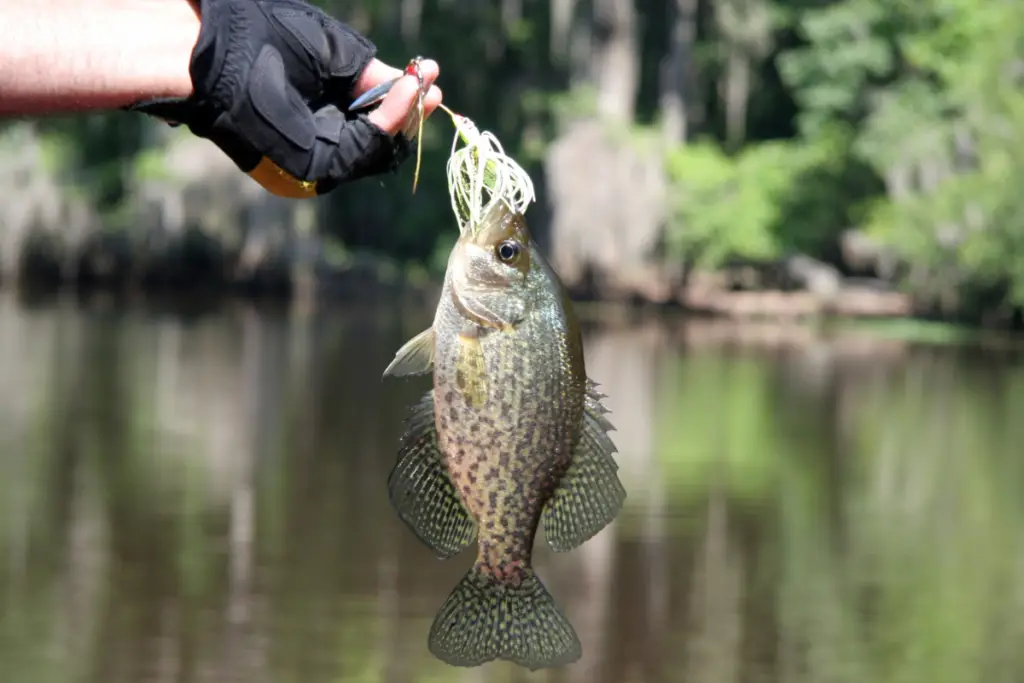
Tips For Catching Crappie
There are several things you should be keeping in mind when you’re trying to catch crappie. Remember, they tend to live amongst vegetation. This should help you narrow down the habitats you’ll be looking for.
As well as general vegetation, you’ll also want to be looking out for sunken trees, laydowns, points or inlets, holes, underwater islands, and dams. You’ll most likely find some crappie amongst these kinds of environments, hiding in the crevices and holes.
The reason underwater structures are so popular with crappie is that they allow for the growth of vegetation under the water. Small fish like the crappie deem these structures ideal cover from lurking predators.
It’s also important to remain patient while you’re fishing for crappie. If you’re new to crappie fishing, you might have heard how easy it is to catch them in large numbers, but don’t get impatient if you’re not catching them right away.
Just like any species of fish, the crappie may not bite immediately. Still, if you didn’t have much patience, you probably wouldn’t be fishing in the first place.
You should try to have a decent map of the body of water you’re setting out on. Getting as much information about the local lakes and rivers as you can before a session also is very useful. Conservation agencies and bait shops will usually be happy to provide you with all of the information you need.
If at all possible, set up a fishfinder/GPS on your boat. A lot of fish finders also have GPS functionality, and this will help you to mark certain waypoints.
You should also have a logbook to record all of your catches. You don’t have to include every detail with every catch, but try to keep track of things like the type of crappie you’re catching (whether they’re black or white), the methods you’ve been using, and the weather conditions in which you’ve been catching them.
Best Bait For Catching Crappie
Most anglers use live bait when they’re trying to catch crappie, and this is usually the best way to go.
But if you’d rather use plastic baits, you should have roughly the same level of success- as long as you’re using the right kind. Here’s all you need to know about the best bait for catching this species.
Live Bait
There’s a range of live baits that are ideal when it comes to fishing for crappie. Most often anglers use minnows as bait, but you’ll have similar results using worms, insects, and any other kind of bait that will attract the crappie’s attention with its movements.
Plastic Bait
If you favor plastic baits, you should be going for soft plastics that have a considerable surface area, and when it comes to the color, it should be as close as possible to the color of what crappie eat.
If it’s sunny out, then the crappie will be getting a lot of sunlight, even when they’re hiding amongst vegetation or in underwater structures. Any color of bait is likely to work, but your best options will be yellow bright pink, and chartreuse. Anything bright.
If there’s less sun so there’s reduced visibility (both for yourself and for the fish), then you’re only going to have much luck if the bait is bright- otherwise, the crappie won’t be able to see the bait.
If the reason for the reduced sunlight is overcast or cloudy skies, you might want to try slightly darker plastic baits. Not completely dark, though- there should still be a hint of brightness. Chartreuse would be ideal in this scenario.
How To Filet And Cook Crappie
So, you’ve caught a good amount of crappie and you’re eager to cook them up. What’s the best way to do this?
First thing’s first; you’ll need a sharp filleting knife. On both sides of the fish, cut behind the gill cover. Slice down the top of the crappie’s back fin, all the way down to the tail. Do this on both sides.
The next cut you should be making is along the fish’s backbone. Cut until you get to the end of the fish’s ribs, and then push the filleting knife until it comes out through the bottom of the fish.
Next, gently pull on the filet with your knife until the meat comes clean off the ribs. It’s important to be as delicate as possible during this process, as the skin is particularly thin.
Use your knife to cut the skin off the meat. Once you’ve done so for every filet, you should have crappie meat that’s free of any bones.
Conclusion
Crappie is one of the easiest species of fish to catch, mainly because they tend to school in very large numbers, and they’re around throughout the year.
There are several different techniques you can use when it comes to catching crappie, the most common ones being jigging, tightlining, and using a bobber & minnow rig.
Realistically, though, it doesn’t matter how much you prepare- you’re probably going to need to experiment to work out what’s best. With some patience and persistence, you should be looking at a good haul of crappie.
- Do You Need An Indicator For Nymph Fishing? - November 16, 2023
- Fishing Safety Tips For Families - September 25, 2023
- What Is The Best Time To Night Fish At A Lake? - September 18, 2023


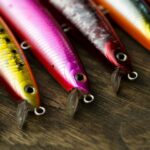


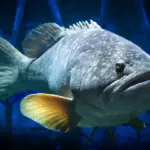
![Kayak Fishing for Beginners [10 Tips for a Successful Trip] fishing kayak moored on a beach](https://irvinelake.net/wp-content/uploads/2022/12/kayak-fishing-for-beginners-150x150.png)
